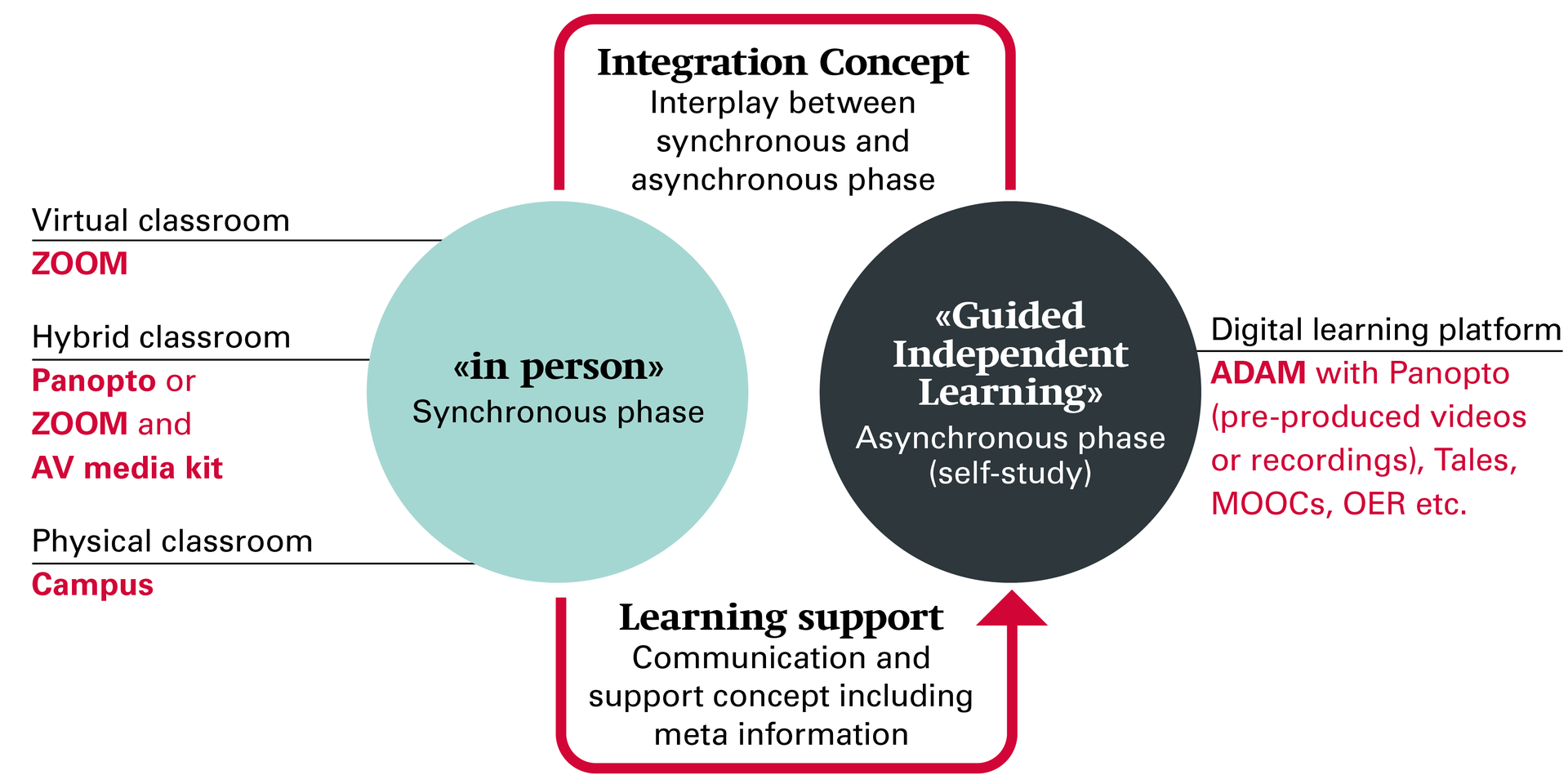BLENDED LEARNING APPROACH
3.2
Blended learning
”In person may be virtual or hybrid if necessary”.
This is the guiding principle adopted by the University of Basel for teaching pandemic times. One of the university’s aims is to ensure that students receive as much in-person teaching as possible. At the same time, the unpredictable nature of a pandemic makes it imperative to ensure that teaching methods are flexible enough for classes to be provided physically (on campus) and virtually (online), and to be able to switch between the two formats. This blended learning approach is set out in the figure below.

Conversion of traditional classroom teaching into blended learning classes requires a certain redesign of the course while maintaining the learning objectives and the ECTS credits acquired if the course is passed (and thus maintaining the overall workload of the student). To achieve this and to redesign courses with relative ease, it is a good idea to think about which objectives and activities can be achieved through asynchronous learning phases (guided independent study) and the best use of the reduced synchronous teaching hours in the virtual or physical classroom.
A successful blended learning teaching concept needs a targeted combination of the synchronous and asynchronous phase (integration concept) and for the combination of the two to be clearly communicated to the students (learning support). Learning objectives will be achieved only by going through the combined learning activities in both phases. The amount of asynchronous independent online study proportionate to in-person study is less important than the didactic design and the timing and sequencing of activities. Match the methods used during in-person teaching and the independent study phases to the learning objectives and skills to be acquired, and integrate various classroom study formats (individual and group work).
